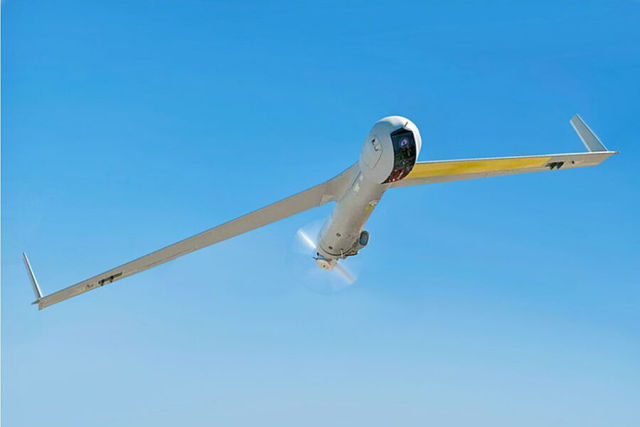Ex-Colonel of the General Staff Khodarenok told how to deceive the American drone ScanEagle Washington announced additional military assistance to Kiev in about $ 3 billion.
Among other things, the Pentagon will supply the Ukrainian army with ScanEagle drones designed for artillery reconnaissance. Military observer of the Newspaper.En" Mikhail Khodarenok figured out how these UAVs work.
According to the Defense News portal, the money will go "to finance contracts in the supply of UAVs, other weapons, military and special equipment that may appear on the battlefield within the next year or two."
Thus, unlike most previous aid packages, the new funding is largely aimed at helping Ukraine strengthen its position in the field of national defense in the medium and long term, the portal notes.
Previous deliveries focused on Ukraine's more urgent needs for weapons and ammunition and included materials that the Pentagon already had in the warehouses of the US Armed Forces and could send as soon as possible.
To date, the United States has provided Ukraine with military assistance worth about $10.6 billion. Pentagon leaders are also considering plans to further expand the training of Ukrainian servicemen outside their country.
Official Kiev claims that the goal of the initiative is to "restore Ukraine's control over Crimea."
Moscow, in turn, has repeatedly stated that Crimea has been an integral part of the Russian Federation since 2014. Unmanned aerial vehicles of the ScanEagle type (15 pieces) for artillery reconnaissance and artillery fire correction are of particular interest as part of the American aid package.
This drone was developed by Boeing and Insitu based on the design of another UAV - SeaScan, a commercial drone designed to help fishermen and track fish migration. The ScanEagle entered service with the US Navy in 2005. In addition, it is in service in the armies of Great Britain, Canada, Australia, New Zealand and a number of other countries. It is curious that it was supplied to the pro-American government of Afghanistan and, according to some media reports, some of these drones went to the Taliban (the organization is banned in Russia).
ScanEagle is designed for reconnaissance, battlefield surveillance and targeting. A stabilized rotating infrared or electro-optical camera is installed in the nose of the device. ScanEagle does not need an airfield. The device is launched using a pneumatic starting catapult.
For landing, a hook is used with which the UAV clings to a stretched cable. The range of application is 100 km, the flight time of the ScanEagle is about 20 hours, the speed is up to 139 km / h, the wingspan is 3 m.
"This is a specialized drone that works directly in the interests of artillery. He helps in the so-called "artillery duels". ScanEagle, among other things, is equipped with specialized sensors that record the moment of firing of enemy artillery installations, analyze the sound of the shot, calculate the possible location of the firing point and transmit this information. That is, they work not only in a visual way. For the AFU, Russian artillery is the most painful topic. It literally floods Ukrainians with shells. The task of the United States is to destroy Russian artillery in Ukraine. ScanEagle can be one of the options for how to do this," writes the American portal Military Watch Magazine.
Such drones are unlikely to be able to influence the course of the special operation in Ukraine.
Firstly, there are few of them. Russian "Eagles", similar in characteristics, are used several orders of magnitude more in the course of their own. Secondly, the mechanism of "catching sounds" can be easily deceived, and the gunners of the Armed Forces of the Russian Federation have been using this technique for a long time. It is enough to create sound interference from several more points simultaneously with the main shot. For example, to give blank shots.
Finally, the ScanEagle is structurally not too different from its civilian predecessor, which means it has extremely weak protection against electronic warfare.
The opinion of the author may not coincide with the position of the editorial board.Biography of the author:
Mikhail Mikhailovich Khodarenok is a military columnist for the newspaper.
Ru", retired colonel.
He graduated from the Minsk Higher Engineering Anti-Aircraft Missile School (1976), the Military Air Defense Command Academy (1986).
Commander of the S-75 anti-aircraft missile division (1980-1983).
Deputy Commander of the anti-aircraft missile regiment (1986-1988).
Senior Officer of the General Staff of the Air Defense Forces (1988-1992).
Officer of the Main Operational Directorate of the General Staff (1992-2000).
Graduated from the Military Academy of the General Staff of the Armed Forces of Russia (1998).
Columnist of "Nezavisimaya Gazeta" (2000-2003), editor-in-chief of the newspaper "Military-Industrial Courier" (2010-2015).Mikhail Khodarenok

